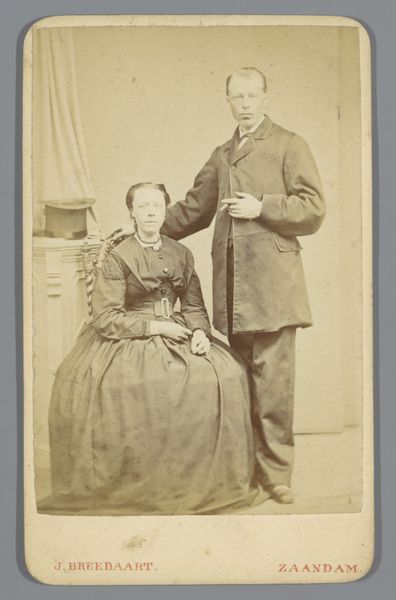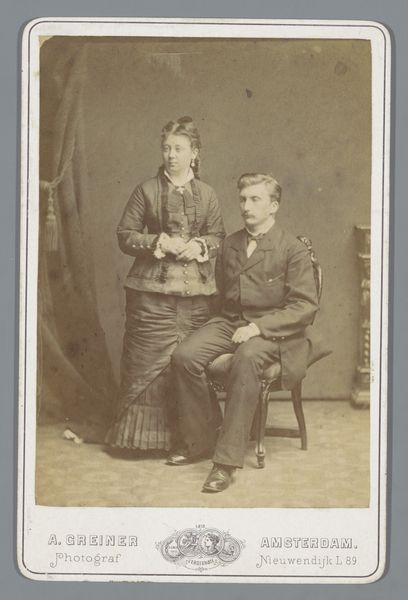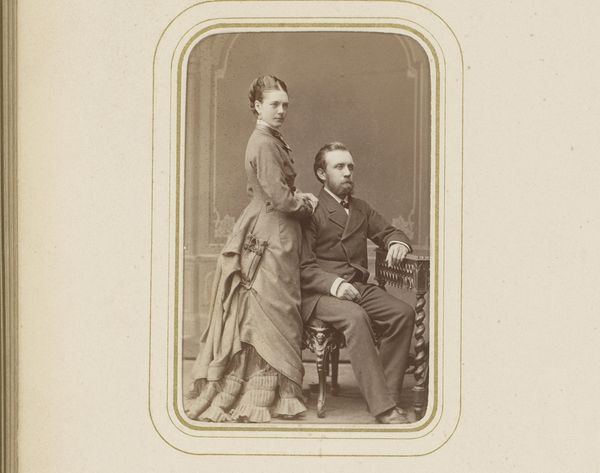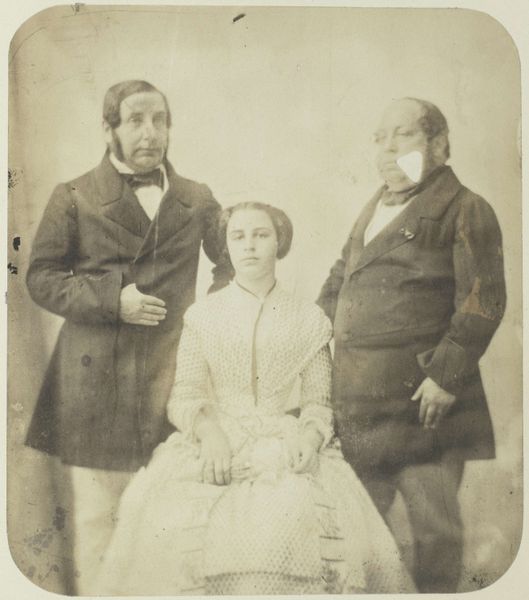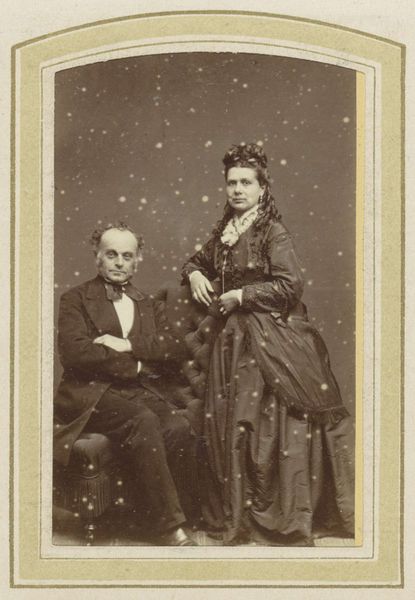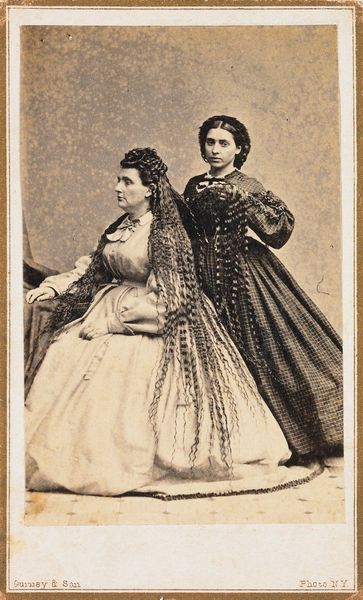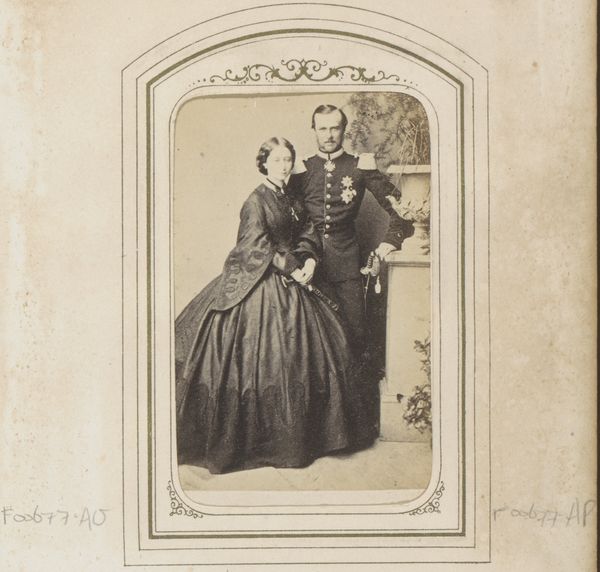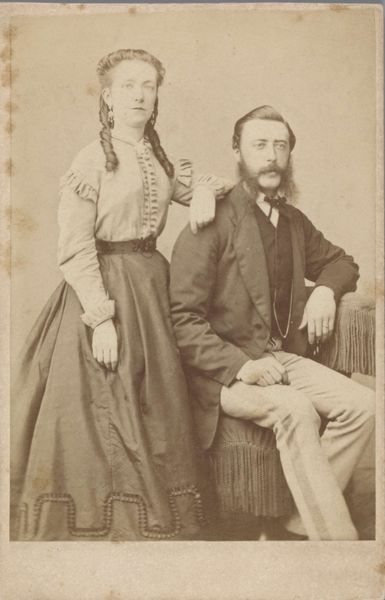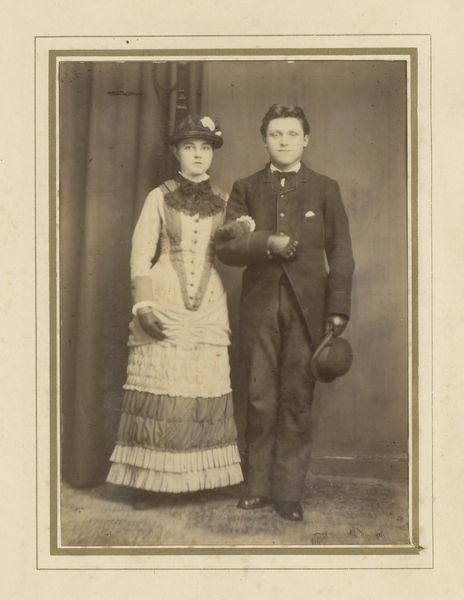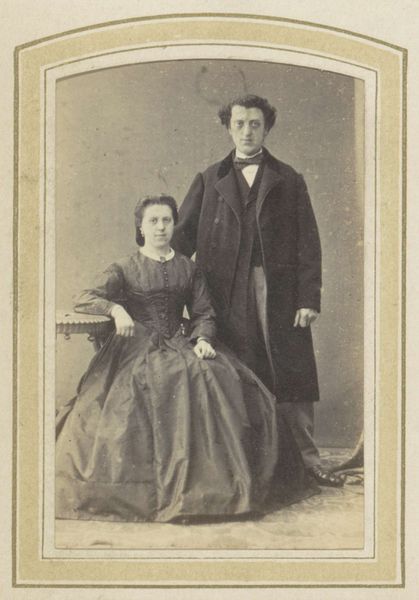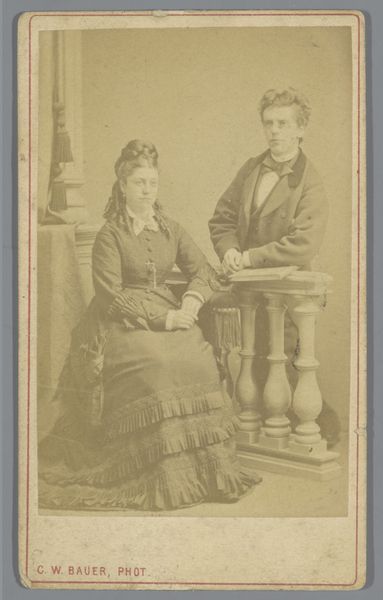![Untitled [theatrical portrait man and woman] by Jeremiah Gurney](/_next/image?url=https%3A%2F%2Fd2w8kbdekdi1gv.cloudfront.net%2FeyJidWNrZXQiOiAiYXJ0ZXJhLWltYWdlcy1idWNrZXQiLCAia2V5IjogImFydHdvcmtzL2NkMWViZTlkLWU2YjEtNGRjMi05NGZiLThhZTc5MjYyNjZmYi9jZDFlYmU5ZC1lNmIxLTRkYzItOTRmYi04YWU3OTI2MjY2ZmJfZnVsbC5qcGciLCAiZWRpdHMiOiB7InJlc2l6ZSI6IHsid2lkdGgiOiAxOTIwLCAiaGVpZ2h0IjogMTkyMCwgImZpdCI6ICJpbnNpZGUifX19&w=3840&q=75)
Untitled [theatrical portrait man and woman] 1858 - 1869
0:00
0:00
Dimensions: 3 1/2 x 2 in. (8.89 x 5.08 cm) (image)3 9/16 x 2 3/8 in. (9.05 x 6.03 cm) (mount)
Copyright: Public Domain
Curator: This daguerreotype, an "Untitled [theatrical portrait man and woman]" by Jeremiah Gurney, dates roughly from 1858 to 1869. It's currently part of the Minneapolis Institute of Art collection. What strikes you first? Editor: Immediately, the image feels stiff and posed, almost like figures from a history painting. The details are incredible for a photograph from this era – the precision! Curator: Precisely, daguerreotypes were meticulously crafted. The silver-plated copper, the chemical process itself, everything speaks to a laborious and specialized kind of labor. Did this capture rely on professional artisanry more so than pure artistry? And consider its value. It represents a significant investment in time and materials. Editor: The material constraints definitely informed the symbolism. Look at the man's military-style uniform and the woman's elaborate gown. I sense an aspiration to project authority and elevated status. The umbrella she holds is very evocative, as is his hat. Curator: Yes, that detail reveals the process of construction itself; it highlights the societal structure surrounding clothing production. This wasn't simply 'clothing;' this was industry. Consider how these elaborate fashions impacted material consumption patterns. Editor: Absolutely, but it’s also signaling deeper social narratives. The clothing can suggest character. He could be an officer, perhaps connected to conflict – though this seems aspirational. She is in a position denoting respectability and status. One might ask what role the clothing plays as signifiers. Curator: Exactly, it's not only the social messages embedded in this "historical fashion" we perceive. Think also how the chemical development influenced the final tonality. Does this unique materiality affect our interpretation? This medium has specific limits that the photographer worked with to get this unique historical artifact. Editor: Indeed. By focusing on symbolism and what cultural echoes reverberate, this photo can tell us volumes about this specific social epoch. Thanks to what we have been talking about, I'll now view all portraits with fresh eyes. Curator: It's equally helpful for viewing nineteenth-century industry differently as well. Considering the economics allows this "history painting" to have a fresh context!
Comments
No comments
Be the first to comment and join the conversation on the ultimate creative platform.
